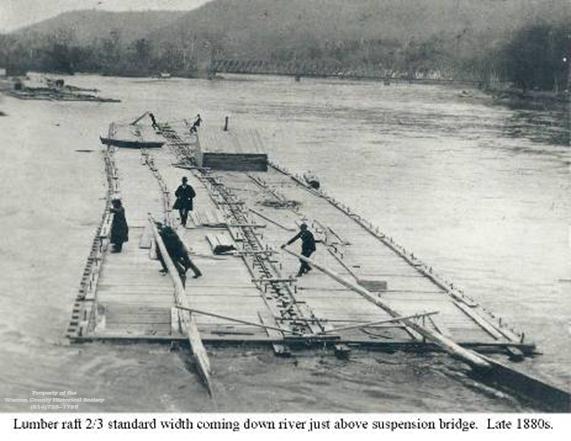
Lumber Rafting
Lumber rafts were used to take logs and shingles down the Allegheny River to builders in Pittsburgh and other cities along the Ohio and Mississippi Rivers. Smaller rafts were made to take the lumber down the creeks.
Sometimes rafts were made of logs, but mostly they were made of squared timber. The timber was joined together using young saplings, but metal chains were often used in addition to the saplings.
Rafts were assembled in the spring when the water was high because of the melting snow. A small raft would be a platform about 12 ft x 48 ft. Oars were used at the end of the raft.
Once in a larger waterway, such as the Conewango Creek, a raft would be joined to other rafts.
Most raft pilots only ran during the day, as it was too dangerous and the water along the Allegheny was too hard to navigate in the dark.
Tying up a raft for the night was called "snubbing." Snubbing was a dangerous job that required the work of a few men on a boat tying cables around both the lumber raft and nearby, strong trees.
The crew on the raft were usually professional raftsmen who made multiple trips in a span of years. They spent their time working, fighting, singing, and dancing. 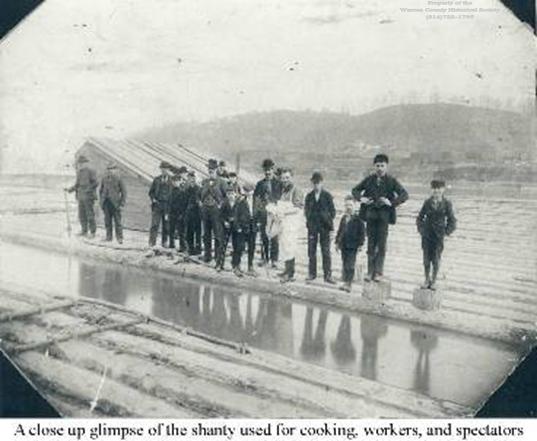
In June of 1881, there was a square dance on a raft as it floated through Warren. The dance began in Onoville and ended at Clark's Eddy.
Rafts made up in the Allegheny River at Warren were made of 60 platforms. These rafts were approximately 340 ft long and 51 ft wide--spanning the length of 3 football fields! Three of these rafts would be joined together at Pittsburgh to make an Ohio River raft, which measured about 540 ft long.
Countless bundles of wooden shingles and other goods to be sold were brought to the cities on rafts. Sometimes whole families would ride a freight to their new home in the west. Men were hired to help get a raft to its new destination, leaving their homes and families for many months.
FAST FACTS
• Lumber rafts were built to provide a means of transportation to sell excess lumber cleared from the land.
• Lumber was sold in Pittsburgh and other cities along the Ohio River and Mississippi River.
• Men working on the rafts would usually find their way home to Warren by walking and sometimes by boat or horseback.
• Rafts were floated in the spring of the year when the water levels were high from snow melt-off and spring rains.
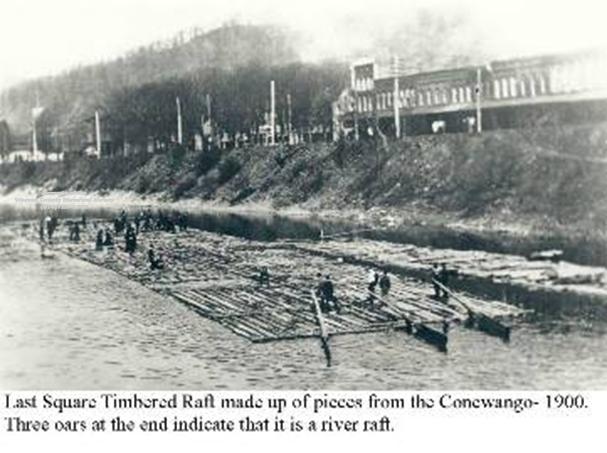
• The size of the raft grew in relationship to the waterway it traveled. Three Conewango rafts made an Allegheny raft. Three Allegheny rafts made an Ohio River raft. The Ohio River rafts covered more than an acre of water.
• Each raft section had an oar at each end.
• Many rafts carried goods from Warren County to be sold in the cities. Wooden shingles were a main product carried on the rafts, all of which were used for construction in the cities.
Additional Resources:
Lumber Rafting on the Allegheny River
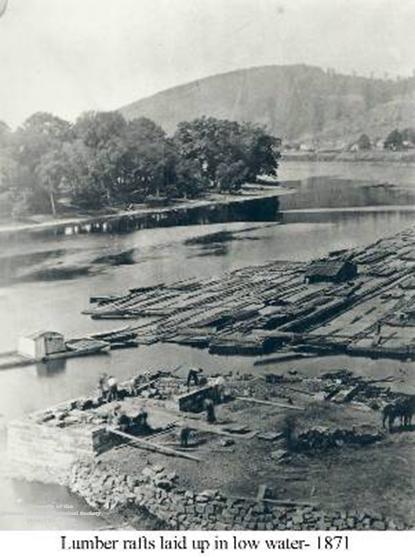
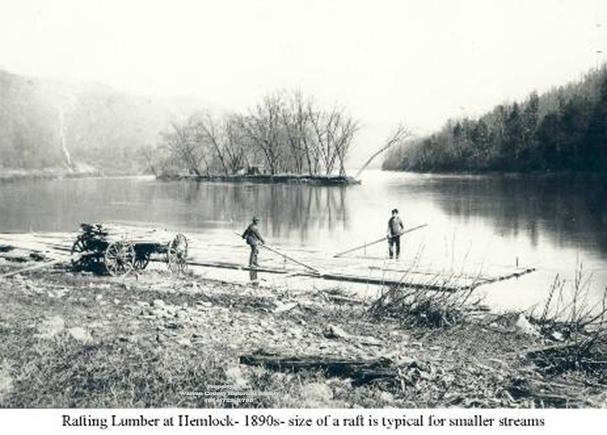
Courtesy of the Warren County Historical Society